 Warning: Mild Spoilers
Warning: Mild Spoilers
This week, I have mostly been watching Space: 1999 on Freeview’s Horror Channel, so the launch episode of The Mandalorian, premiering on the new Disney Plus web streaming service, not only provided a contrasting model of television consumption but also emphasised how startling different Star Wars was on its original debut back in the 1970s.
Space: 1999 was made in a post-Kubrick, 2001: A Space Odyssey mediascape, where any work of SF film or TV hoping to be taken seriously had to be ponderous to the point of boredom. The series is designed in that sci-fi aesthetic characterised by white walls and flashing lights. Which is fair enough, but then also deciding the cast should dress in beige gives the whole enterprise the look of a particularly dull bowel of semolina. But for many back then, that was how the future was going to look: bland, clinical and super-rational.
What really dates Space: 1999 is the fact that a Moonbase Alpha has a computer called “Computer”.
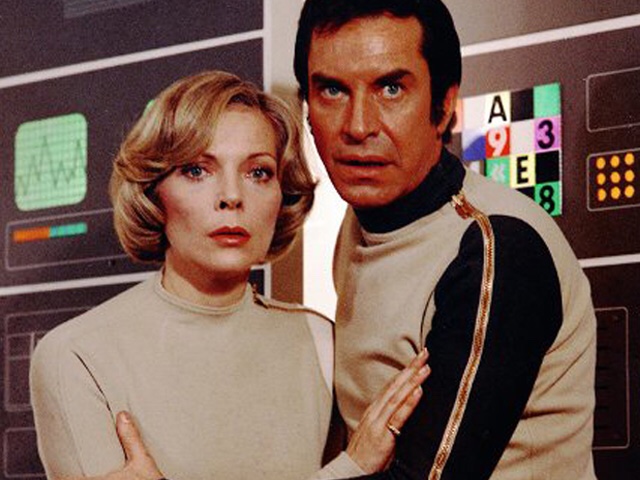
Space: 1999, currently airing on the Horror Channel in the UK
The series received a lot of flack because of its ludicrous pseudo-science. The term technobabble was coined for the scientific exposition in Star Trek: The Next Generation, but even the original Star Trek series contained gobbets of science nonsense. The important thing is to get the right balance between the convincing and the incredulous. Space: 1999 doesn’t – and viewers are left morosely contemplating the possibility of gravity aerials.
That said, at least Space: 1999 busied itself with one of the central themes of science fiction – the fate of humanity in the face of the future. In this, genre defining, conflict meaningful human values are tested against an uncaring universe often embodied in in-human aliens, robots, and intelligences and diverse others.
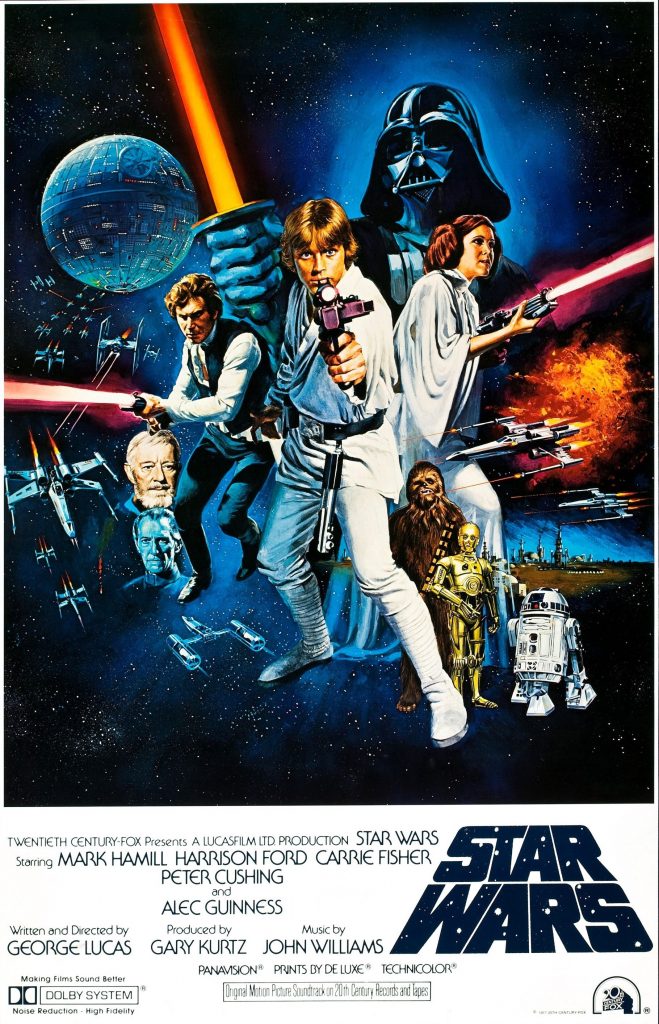
In this respect, Star Wars was something else again; an exemplary product of post-modernism characterised, according to scholar Fredrick Jameson, as nostalgia and pastiche. Jameson’s exemplar was, if memory services me, the film American Graffiti, also the creation of George Lucas – but Star Wars serves just as well.
The first Star Wars was set in the past both in terms of its own, fictional history and in the movie’s relation to cinema. It had nothing to say about humanity, past, present or future. Instead, it was an evocation of Hollywood’s past. Pastiche eclipsed the more critical elements of both parody and satire, integral to the best SF, either in comics, novels or on screen. Publicity primed audiences were encouraged to understand the film in terms of past cinematic pleasures, where the double act between C-3PO and R2-D2 was reminiscent of other great comedy acts, such as Laurel and Hardy or Abbot and Costello. That the scenes of Luke Skywalker, swinging around the Death Star with Princess Leia in his arms, were little different to the action adventures of Errol Flynn or Tarzan.
Star Wars was, initially, the equivalent of a cinematic cuddle, or cwtch*, gathering its audience in a reassuring embrace, telling them that the universe was not as unrelentingly cynical, as 1970’s cinema had so far suggested. Star Wars offered absolute certainty, a Manichean world divided into good and evil, in which the good won medals.
Later, Star Wars was given the additional title of ‘A New Hope’ but in fact, the film offers no hope at all, or rather no future for humanity and no way of confronting that future.
Star Wars was, in effect, the movie equivalent of Peanuts character Linus’s comfort blanket; it is hardly surprising that the first ‘trilogy’ ended with a race of teddy bears.
It is also not surprising that, as a cinema goer who had, from a young age, watched films such as The Taking of Pelham 123, Network, Hammerhead and Escape from the Planet of the Apes in the cinema, and a good deal more on TV, that I watched most of Star Wars for the first time with a sneer on my face.
That doesn’t mean that I haven’t found the films totally enjoyable. I have particularly appreciated the way the three prequels brought the cover art of old science fiction pulps to life, in their cities and spaceships.
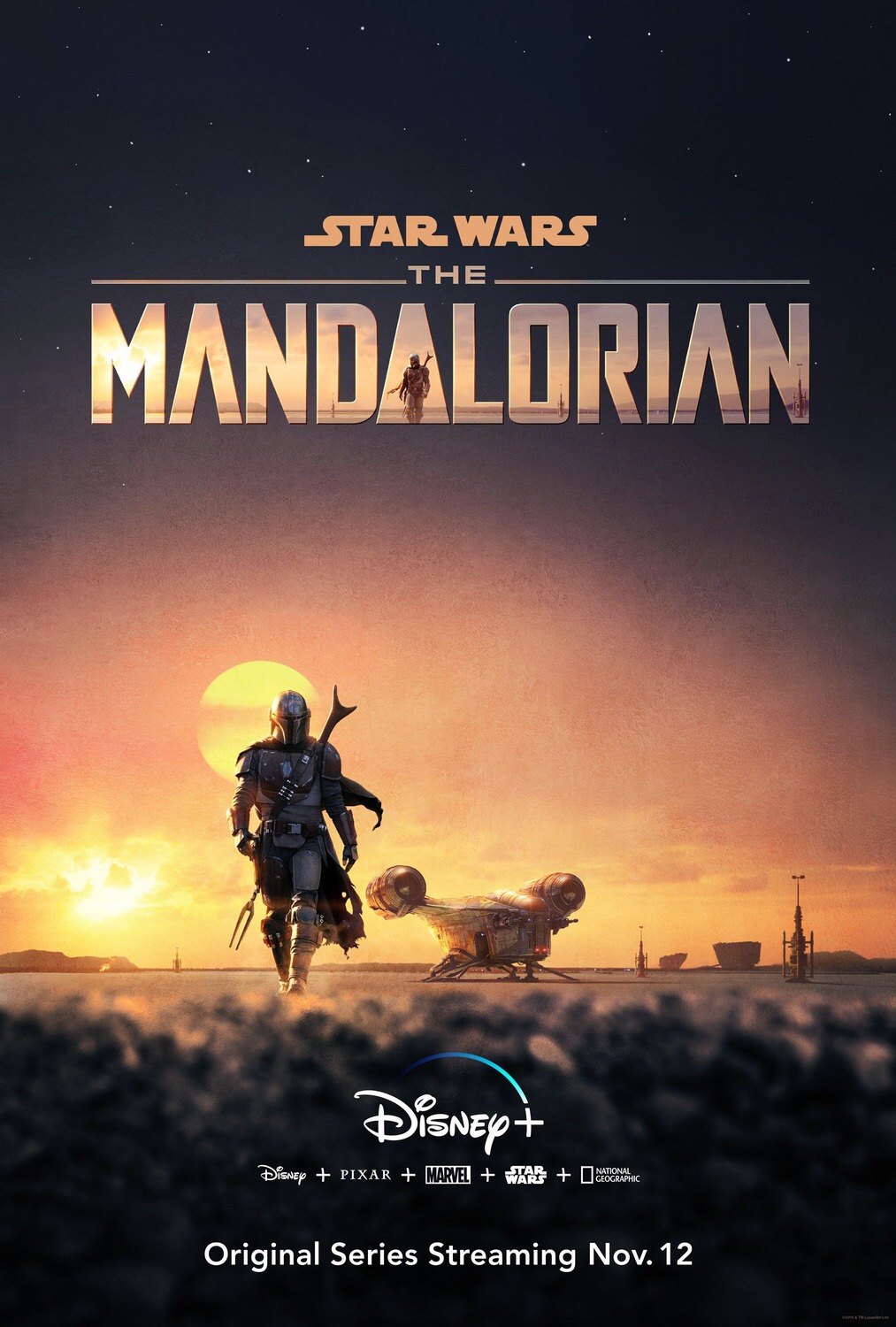
Image: Disney Plus
Which brings me to the latest Star Wars tie-in, the first episode of The Mandalorian, a story set after the fall of the Empire in The Return of the Jedi and before The Last Jedi. It quickly establishes the nostalgic trappings of the Star Wars Universe, including its occasionally grim humour. We see a Kowakian monkey-lizard being cooked on a spit and the plot recapitulates familiar moments from the franchise, delivering a cantina fight scene, fights with CGI creatures of various sizes, including Blurggs, and scenes on ice and desert worlds. The episode handles all of these well.
In terms of plot, it’s easy to become immersed in the narrative and there is no real need to understand the convoluted history of the Mandalorians that has been developed in comics and games.
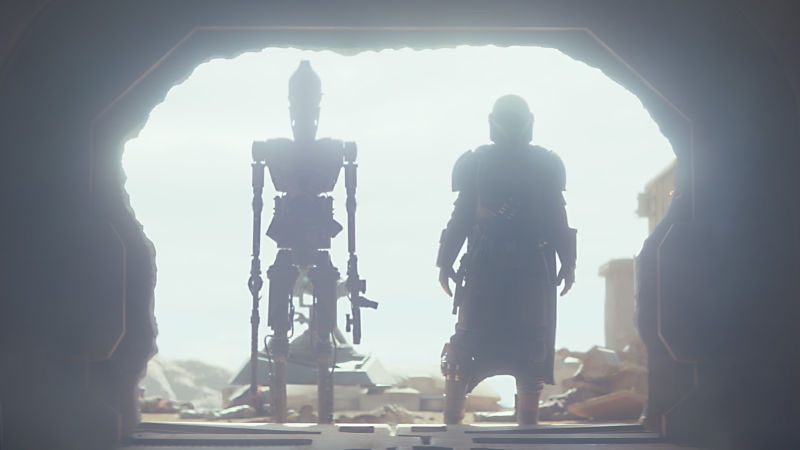
Image: Disney Plus
(In brief, the Mandalorians were native to Coruscant, but were driven off that world by humans and eventually settled on a world which they named after their leader Mand’alor. On Basilisk, they converted the native population into beasts of war and took their War Droids to serve as battle mounts. The Mandalorians would later ally themselves with the Sith against the Republic. The rest of the convoluted history is only for those who gain a special thrill from acquiring trivia, although it may be worth noting that The Mandalorians were eventually led by Boba Fett).
It is fair to say that many of the characters in The Mandalorian have a deep history for many fans and this will lend the film an appeal beyond what is explicitly dramatised in the series. I particularly warmed to the IG-11 droid bounty hunter of a type seen in The Empire Strikes Back. The robot enters shoot-outs with comically stiff arms and a desire to kill itself to evade capture. Werner Herzog plays The Mandalorian’s client in a scene stealing yet controlled performance, dripping in menace. Nick Nolte plays Kuiil, a crusty old rubber masked guy who befriends The Mandalorian (played by a helmetted Pedro Pascal).
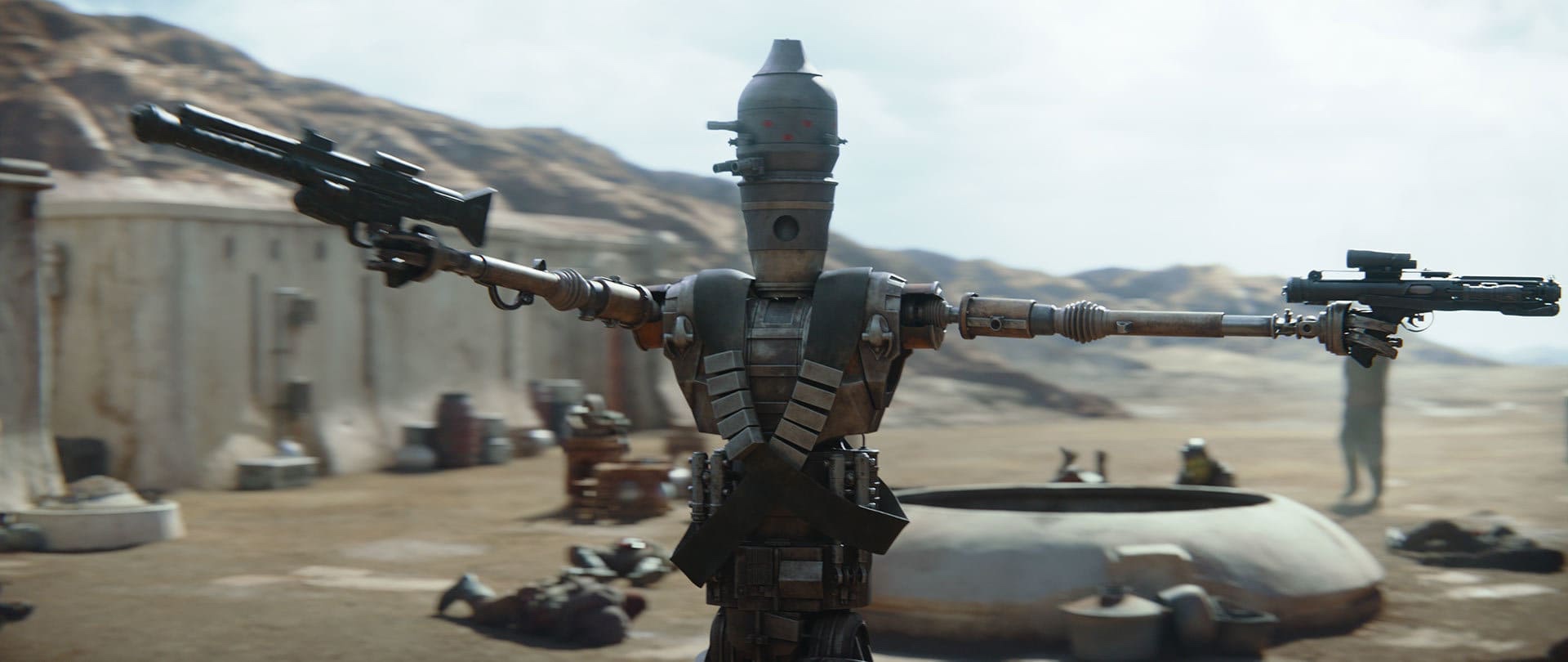
Image: Disney Plus
Not all of the character creatures work. Jamal Antar plays a blue fish person who sounds like a West Coast American. I was never a big fan of the vaguely racist accents of many of the movies’ aliens and maybe Antar’s uninflected performance is supposed to be funny. It’s not; it’s just clunky and bathetic. The harsh clarity of today’s TV also makes the prosthetics look like only a small improvement on John Freelander’s work on Doctor Who (such as the Draconians and Davros).
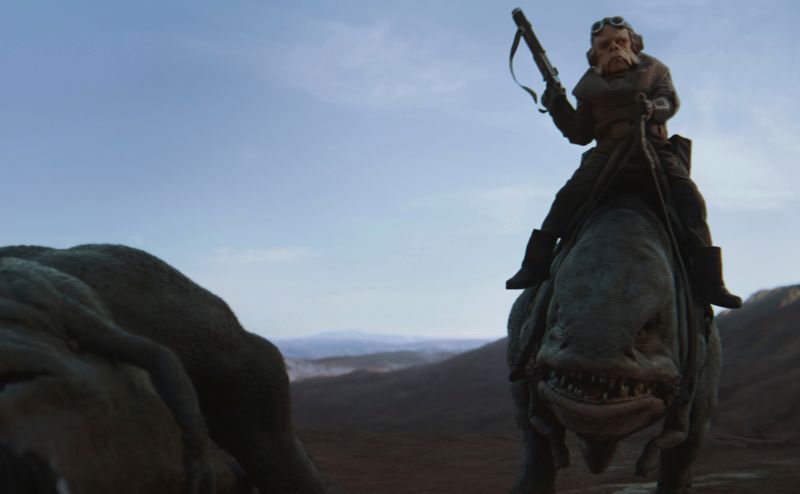
Image: Disney Plus
Watching The Mandalorian, I fell under the thrall of an episode that had absolutely nothing new to say about anything, even its own universe. There is not a single original moment in the show. Every scenario and much of the dialogue has been reused from every series you have ever watched. When The Mandalorian strides into town to collect on a bounty, or to capture “an asset”, there is not the slightest chance that you will not feel that you have seen it all before.
But then, that will be part of its appeal for Star Wars fans who will, no doubt, enjoy not being challenged, all over again.
Tim Robins
• Disney Plus is available now in the United States, Canada and The Netherlands, launching in the UK on 31st March 2020. Web https://preview.disneyplus.com
* It’s Welsh. Look it up…
• Star Wars on AmazonUK (Affiliate Link)
A freelance journalist and Doctor Who fanzine editor since 1978, Tim Robins has written on comics, films, books and TV programmes for a wide range of publications including Starburst, Interzone, Primetime and TV Guide.
His brief flirtation with comics includes ghost inking a 2000AD strip and co-writing a Doctor Who strip with Mike Collins. Since 1990 he worked at the University of Glamorgan where he was a Senior Lecturer in Cultural and Media Studies and the social sciences. Academically, he has published on the animation industry in Wales and approaches to social memory. He claims to be a card carrying member of the Politically Correct, a secret cadre bent on ruling the entire world and all human thought.
Categories: Digital Media, downthetubes News, Features, Other Worlds, Reviews, Star Wars, Television
 In Review: The Mandalorian Season Two
In Review: The Mandalorian Season Two
dull bowel of semolina?
The visuals gifted me by that statement made this story well worth the time spent reading it outside of the salient points it raised.